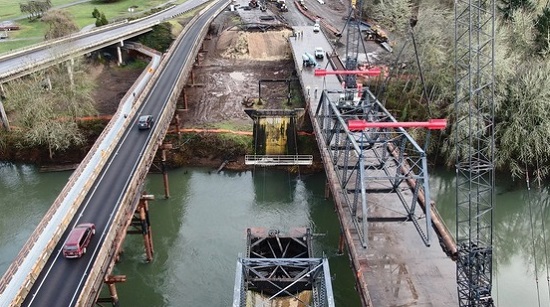MEDFORD, Ore. — Oregon’s aging bridge infrastructure is under increasing strain, with a recent state report highlighting a growing number of structures in urgent need of repair or replacement. The Oregon Department of Transportation’s (ODOT) latest findings reveal that at the current pace of repairs, it would take an estimated 900 years to replace all state-owned bridges. This situation is particularly concerning for the Medford Viaduct, a key transportation link that was built in 1962. As with many of Oregon’s aging bridges, the viaduct is showing signs of wear and will require significant attention to remain resilient, especially in the event of a major earthquake.
Ray Bottenberg, the state bridge engineer for ODOT, emphasized that the department is actively working to maintain bridges throughout the state and prevent them from deteriorating into “poor” condition. Despite these efforts, the challenges posed by aging infrastructure are becoming more pronounced, especially when considering the need for seismic retrofitting and full-scale replacements.
“We’ve been able to manage maintenance and repairs effectively, but the budget constraints have really hindered our ability to replace bridges,” said Bottenberg. “At the moment, we’re doing everything we can to keep the bridges in usable condition, but when it comes to replacement, we’re falling behind.”
The state’s bridges are vital to maintaining the flow of commerce and transportation, but the high costs associated with replacing aging structures and retrofitting them to meet modern seismic standards present a serious financial challenge. As part of its ongoing efforts, ODOT prioritizes heavily traveled routes such as Interstate 5, but without sustained investment, the department’s ability to maintain and replace bridges on time is at risk.
The Medford Viaduct, which plays a crucial role in local and regional transportation, exemplifies the broader issue. Built over six decades ago, the bridge is not only showing the effects of age but also vulnerable to seismic events. Retrofitting the structure to withstand an earthquake is necessary for ensuring long-term safety, but funding for such improvements remains limited.
ODOT’s report highlights that despite ongoing maintenance, the backlog of bridge replacements continues to grow. The department is focused on managing the most immediate threats, but without additional funding, many bridges, including the Medford Viaduct, may continue to deteriorate at an accelerated pace.
The state’s ability to address its bridge infrastructure challenges requires a balanced approach, incorporating both short-term maintenance and long-term replacement strategies. However, with limited resources, officials stress the importance of securing more funding to meet both the immediate and future needs of Oregon’s aging bridges.
As the state grapples with this growing infrastructure crisis, the Medford Viaduct stands as a reminder of the urgency in addressing the seismic vulnerabilities and deteriorating conditions of Oregon’s bridges before it’s too late.

